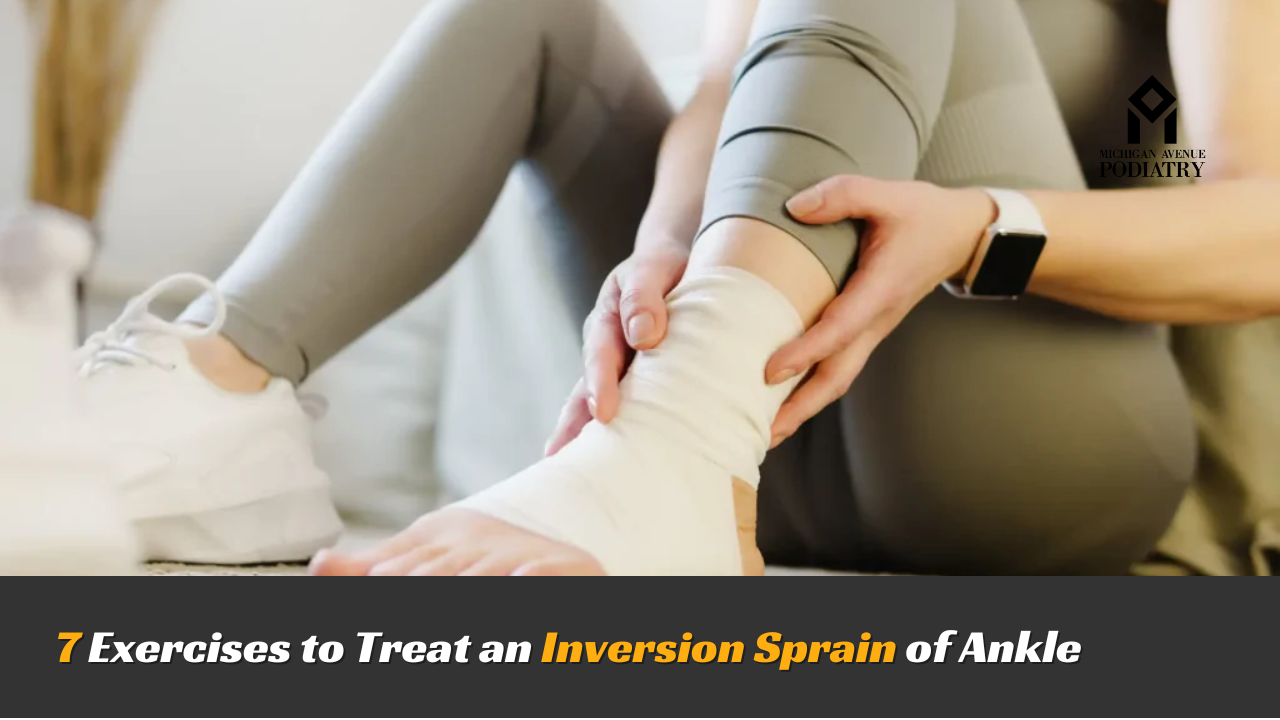An inversion sprain of the ankle, commonly referred to as a lateral ankle sprain, occurs when the foot twists inward, causing damage to the ligaments on the outer side of the ankle. This type of injury is prevalent among athletes and active individuals. Fortunately, with the right exercises, one can expedite the recovery process, reduce pain, and restore full functionality. In this comprehensive guide, we will explore seven effective exercises that can aid in treating an inversion sprain of the ankle. These exercises are designed to enhance strength, improve flexibility, and prevent future injuries.
1. Ankle Circles: Enhancing Mobility and Flexibility
Ankle circles are a fundamental exercise to begin with after an inversion sprain. They help to improve the range of motion and reduce stiffness. This exercise can be performed in both seated and lying positions.
How to Perform Ankle Circles:
- Sit on a chair or lie down with your leg extended.
- Lift the injured foot slightly off the ground.
- Slowly rotate your foot in a circular motion, making large, controlled circles.
- Perform 10 circles in a clockwise direction, then 10 in a counterclockwise direction.
- Repeat 3 sets of 10 circles each way.
Benefits:
- Increases blood flow to the injured area.
- Promotes gentle stretching of the ligaments.
- Helps in maintaining ankle mobility.
2. Toe Raises: Building Strength and Stability
Toe raises are essential for strengthening the muscles around the ankle and improving stability. This exercise targets the calf muscles, which play a crucial role in ankle support.
How to Perform Toe Raises:
- Stand with your feet shoulder-width apart, using a wall or chair for support if needed.
- Slowly lift your heels off the ground, rising onto your toes.
- Hold the position for a few seconds.
- Gradually lower your heels back to the ground.
- Perform 3 sets of 15 repetitions.
Benefits:
- Strengthens the calf muscles and Achilles tendon.
- Enhances balance and proprioception.
- Reduces the risk of future ankle sprains.
3. Resistance Band Exercises: Targeted Strength Training
Using a resistance band is an excellent way to provide targeted strength training for the ankle. These exercises can be performed in multiple directions to ensure comprehensive muscle engagement.
How to Perform Resistance Band Exercises:
- Sit on the floor with your leg extended.
- Wrap a resistance band around the ball of your foot, holding the ends of the band with your hands.
- Slowly push your foot forward against the resistance of the band, then return to the starting position.
- Perform 3 sets of 15 repetitions in each direction: forward, backward, inward, and outward.
Benefits:
- Enhances the strength of specific muscle groups around the ankle.
- Improves coordination and control.
- Facilitates a more tailored rehabilitation approach.
4. Heel and Toe Walks: Improving Coordination and Gait
Heel and toe walks are functional exercises that help improve coordination and normalize gait patterns disrupted by an inversion sprain of the ankle.
How to Perform Heel and Toe Walks:
- Find a flat, open space where you can walk.
- For heel walks, lift your toes off the ground and walk on your heels for 20 steps.
- For toe walks, lift your heels off the ground and walk on your toes for 20 steps.
- Repeat the cycle 3 times.
Benefits:
- Strengthens the anterior and posterior muscle groups of the lower leg.
- Enhances proprioception and balance.
- Aids in correcting walking patterns.
5. Ankle Alphabets: Dynamic Mobility Exercise
Drawing the alphabet with your foot is a dynamic mobility exercise that engages multiple muscle groups and helps restore full ankle motion.
How to Perform Ankle Alphabets:
- Sit or lie down with your leg extended.
- Imagine your big toe is a pen and write the alphabet in the air.
- Make the letters as large and deliberate as possible.
- Repeat the entire alphabet 2-3 times.
Benefits:
- Promotes comprehensive ankle movement.
- Engages various muscles and ligaments in different planes.
- Increases neuromuscular control.
6. Balance Exercises: Enhancing Proprioception and Stability
Balance exercises are crucial in the rehabilitation of an inversion sprain of the ankle. They enhance proprioception, the body’s ability to sense its position and improve overall stability.
How to Perform Balance Exercises:
- Stand on the injured leg while keeping the other leg off the ground.
- Maintain your balance for 30 seconds to 1 minute.
- For added difficulty, close your eyes or stand on an unstable surface like a balance pad.
- Repeat 3 sets.
Benefits:
- Enhances proprioceptive abilities.
- Strengthens stabilizing muscles around the ankle.
- Reduces the likelihood of re-injury.
7. Calf Stretches: Restoring Flexibility
Calf stretches are essential to maintain and restore flexibility in the lower leg, which can be compromised following an inversion sprain.
How to Perform Calf Stretches:
- Stand facing a wall with your hands placed on it for support.
- Step back with the injured leg, keeping it straight and the heel on the ground.
- Bend the front knee until you feel a stretch in the calf of the back leg.
- Hold the stretch for 30 seconds.
- Repeat 3 sets of stretches for each leg.
Benefits:
- Improves flexibility in the calf muscles and Achilles tendon.
- Reduces muscle tightness and discomfort.
- Aids in the prevention of further injury.
Conclusion
Treating an inversion sprain of the ankle requires a well-rounded approach that focuses on mobility, strength, balance, and flexibility. By incorporating these seven exercises into your rehabilitation routine, you can expedite recovery, restore full functionality, and significantly reduce the risk of future injuries. Always consult with a podiatrist or healthcare professional before starting any new exercise regimen, especially following an injury. With consistency and dedication, you can overcome an inversion sprain and return to your normal activities stronger than ever.




